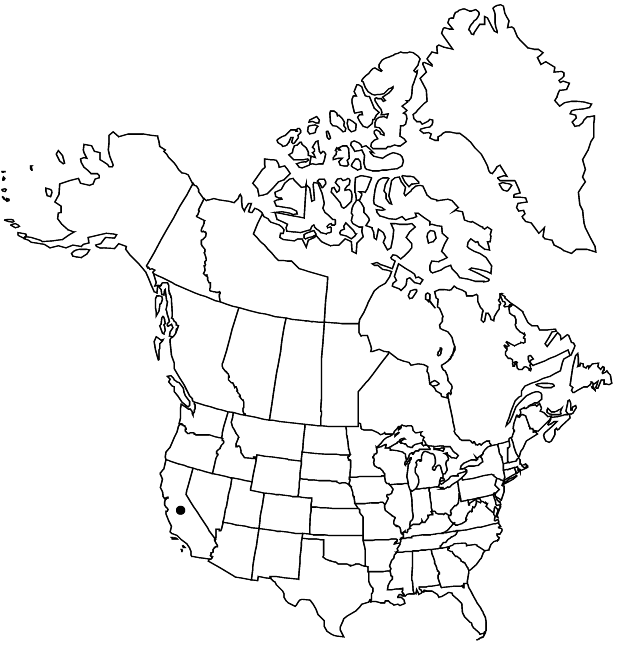Arctostaphylos luciana
Leafl. W. Bot. 10: 177. 1965 ,.
Shrubs or trees, erect, 2–3 m; burl absent; twigs sparsely short-hairy. Leaves: petiole to 2 mm; blade glaucous, dull, ovate to ± orbiculate, 2–4 × 1.5–2.5 cm, base distinctly lobed, auriculate-clasping, margins entire, plane, surfaces smooth, appressed gray-canescent to finely tomen-tose, glabrescent. Inflorescences racemes, simple or 1-branched; immature inflorescence pendent, (branches crowded, concealed by bracts), axis 0.5–1 cm, 1+ mm diam., sparsely short-hairy; bracts not appressed, leaflike, linear-lanceolate, 5–10 mm, apex acuminate, surfaces canescent. Pedicels 5–10 mm, glabrous. Flowers: corolla white, conic to urceolate; ovary glabrous. Fruits depressed-globose, 6–12 mm diam., glabrous. Stones distinct. 2n = 26.
Phenology: Flowering winter–early spring.
Habitat: Chaparral
Elevation: 300-500 m
Discussion
Arctostaphylos luciana is found on siliceous shale east of Cuesta Pass in the southern Santa Lucia Mountains of San Luis Obispo County.
of conservation concern
Selected References
None.
